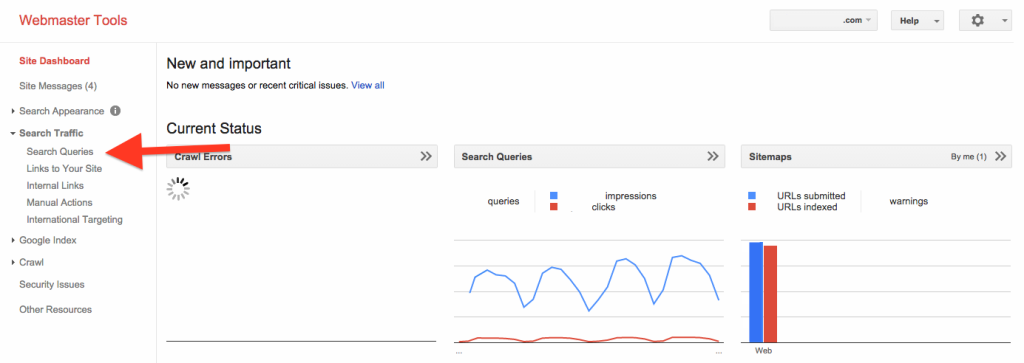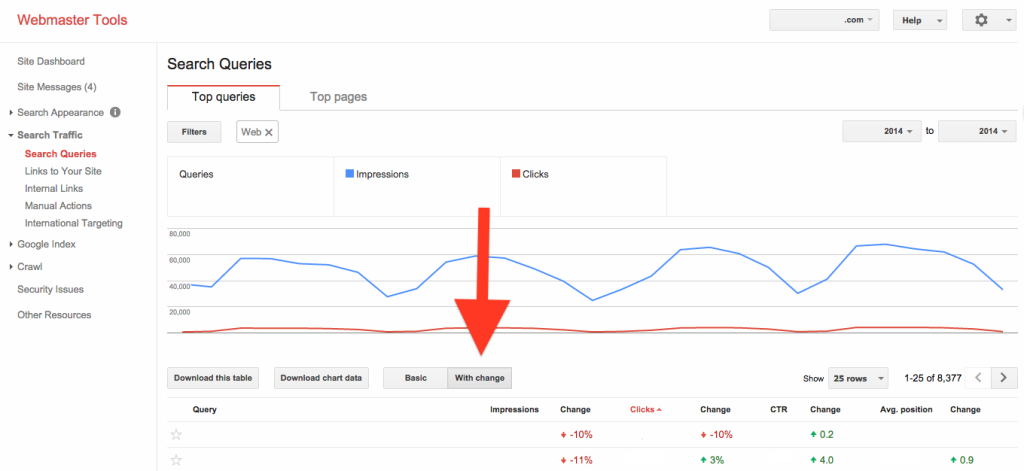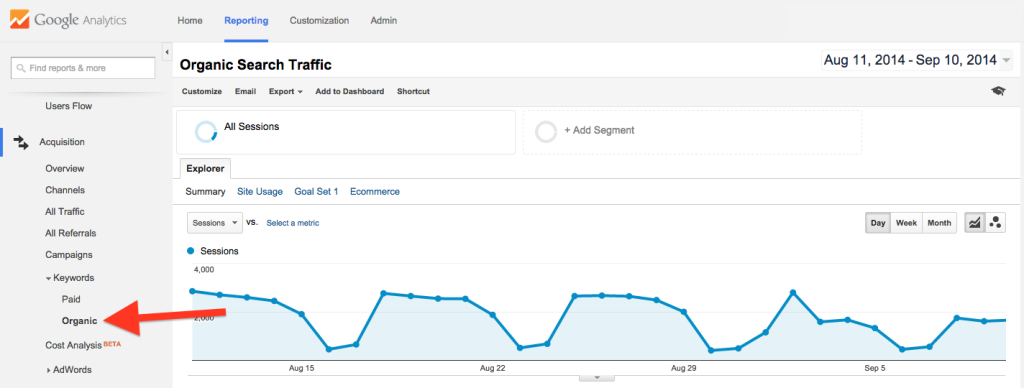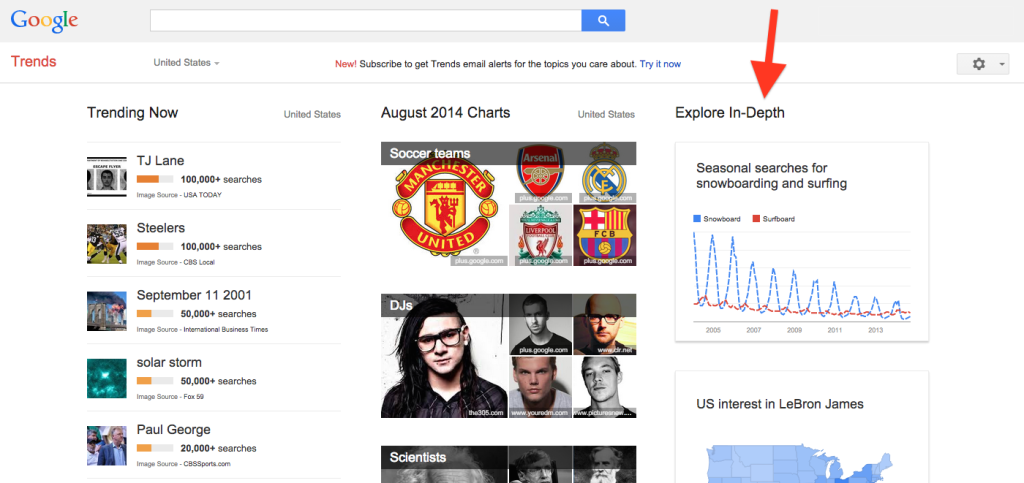Are Your Rankings Dropping? 4 Easy Ways to Discover What’s Really Happening
Most of the time when you check your organic search rankings and website traffic, you’re happy to see some marginal growth or frustrated to see a flat line. But today it’s different. What’s going on? Are my rankings actually dropping?  Google’s updates seem to happen more and more often. Sometimes big updates aren’t even announced or acknowledged (hey, thanks Google!). But what really messes up marketers are features like personalization and localization which make it even more difficult to find out what’s really happening to your rankings. Here are four simple perspectives you can take to look at multiple aspects of your SEO profile to figure out what is really happening.
Google’s updates seem to happen more and more often. Sometimes big updates aren’t even announced or acknowledged (hey, thanks Google!). But what really messes up marketers are features like personalization and localization which make it even more difficult to find out what’s really happening to your rankings. Here are four simple perspectives you can take to look at multiple aspects of your SEO profile to figure out what is really happening.
Perspective #1: Examine Your Ranking from Multiple Angles
Personalization and localization of search results are making it harder to tell what’s really going on with your rankings, but there are a few things you can do to get a more accurate picture of how Google.com is ranking your site.
- Use depersonalized search – A depersonalized search will (supposedly) remove the biases that Google has learned about you – where you are physically and which sites you favor – to give you a more objective idea of your search ranking. You can get step-by-step instructions on how to do an easy depersonalized search in our resources section.
- Use multiple tracking tools – Site tracking tools range from expensive suites to free rank checkers. For an accurate look at your ranking trends, use at least two – a primary service, and a second opinion. We use Moz Pro (fancy, feature-rich and more pricey) and WebPosition (simple, cheap & effective). Be sure to avoid rank checking software or plugins that run on your own computer – cloud-based tools are by far more reliable and more consistent. Whichever tools you use, stick with them so you can compare apples to apples over time.
- Phone a Friend – Ask a few friends in different geographical areas to check your ranking – and be sure they are using depersonalized search too! Don’t just ask “Where do I rank?” Search results are becoming more and more crowded with ads, News results, Images results, etc., so it’s best for you to ask for a screenshot of what they actually see so you know exactly what is happening on the results page.
Remember, there’s no way to guarantee that depersonalized search is completely unbiased, and different tracking tools will sometimes give you different results. That means you want to keep checking these sources on a consistent basis over time to get a good picture of what is really happening with your rankings.
Perspective #2: Google Webmaster Tools
Google Webmaster Tools offers two pieces of data that are insightful: Search page impressions and average rank. Unfortunately, Webmaster Tools only shares this data for the most recent two months. 1. Log into Webmaster Tools and select Search Queries from the Search Traffic menu on the left sidebar.  2. Click to select “With change” so you can quickly see how your site rank is changing.
2. Click to select “With change” so you can quickly see how your site rank is changing.  I like to point out that this is the information that Google chooses to give you. Is it 100% accurate? Updated to the minute? There’s really no way for us to know for certain. It’s interesting to note that the data from Webmaster Tools doesn’t always line up exactly with the same set from Google Analytics, but neither is there much anyone can do about it. It’s definitely helpful, just remember to take it with a grain of salt.
I like to point out that this is the information that Google chooses to give you. Is it 100% accurate? Updated to the minute? There’s really no way for us to know for certain. It’s interesting to note that the data from Webmaster Tools doesn’t always line up exactly with the same set from Google Analytics, but neither is there much anyone can do about it. It’s definitely helpful, just remember to take it with a grain of salt.
Perspective #3: Google Analytics Traffic Data
Your next step is to use Google Analytics to check the organic search traffic to your site. In Analytics, scroll down the left menu bar to Acquisitions, open the Keywords menu by clicking the small arrow, and click Organic.  If the above 3 sources show you an overall decrease in rankings and traffic, it might be time to worry. Have recent changes to your website affected your SEO? Did Google announced another algorithm update? It might be time for a deep dive to find out what’s really happening. Often time these 3 data sources don’t agree. Is it still unclear what is actually happening with your rankings? Or do rankings seem to be increasing while traffic is decreasing? One more perspective may prove helpful.
If the above 3 sources show you an overall decrease in rankings and traffic, it might be time to worry. Have recent changes to your website affected your SEO? Did Google announced another algorithm update? It might be time for a deep dive to find out what’s really happening. Often time these 3 data sources don’t agree. Is it still unclear what is actually happening with your rankings? Or do rankings seem to be increasing while traffic is decreasing? One more perspective may prove helpful.
Perspective #4: (Google) Trends
If you do get into Google Analytics and notice that your traffic is shifting independent of your ranking, what else could be going on? Every niche experiences seasonal changes, although some are more dramatic than others. If your industry generally endures slow months, quarters, or seasons, then you can expect the volume of search for your keywords to change traffic data without your rank necessarily changing. A lot of B2B verticals, for example, see slower sales during the summer and during winter holidays. Decision makers are on vacations, and buyers are more focused on their families than their work. You will still rank the same for your top keywords, but traffic may stall on your site because it’s stalling everywhere. Google Trends can also help you determine if demand for your service or product in increasing or decreasing in general. 1. In Google Trends, click Explore In-Depth on the top of the right column.  2. Enter one or more of your primary keywords.
2. Enter one or more of your primary keywords.  The graph will give you a perspective of the big picture trends for your keywords.
The graph will give you a perspective of the big picture trends for your keywords.  Google will also show you where the most interest for your product is coming from worldwide, and compare related searches and keywords. It’s really interesting data – now you just have to not get distracted browsing keywords for hours upon hours. (Or maybe that’s just me.)
Google will also show you where the most interest for your product is coming from worldwide, and compare related searches and keywords. It’s really interesting data – now you just have to not get distracted browsing keywords for hours upon hours. (Or maybe that’s just me.)
Rankings Tanking? Maybe Not
These tools should give you the info you need to get a good idea of what is actually happening with your website ranking.
- If your rank is actually changing, you will see that change in multiple tools, and from multiple perspectives.
- If your rank is actually changing, it will affect traffic. If traffic remains consistent, or changes incongruently with the perceived shift in ranking, there is probably something else going on.
As an added bonus, if you find that your rank is actually staying fairly consistent, but your traffic is changing, you’ve most likely identified a seasonal shift in your market. Those are powerful insights that can help you structure your business and your communication strategies around the real life demands of the marketplace. (It will also help you remain calm a year from now when you notice traffic shifting the same way again.) You’re ready to start analyzing your ranking like a pro.
What's Next?
Profound Strategy is on a mission to help growth-minded marketers turn SEO back into a source of predictable, reliable, scalable business results.
Start winning in organic search and turn SEO into your most efficient marketing channel. Subscribe to updates and join the 6,000+ marketing executives and founders that are changing the way they do SEO:
And dig deeper with some of our best content, such as The CMO’s Guide to Modern SEO, Technical SEO: A Decision Maker’s Guide, and A Modern Framework for SEO Work that Matters.




